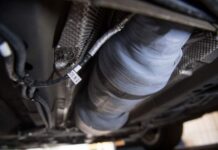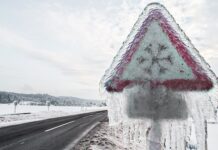A team of Russian scientists proposed a new explanation for why on the site of the alleged fall of the Tunguska meteorite was missing fragments. According to their calculations, the devastation in the region are not associated with the space object falling to the Ground, and with shock waves, arising during the passage through the iron of the asteroid through the Earth’s atmosphere. Article researchers published in the Monthly Notices of the Royal Astronomical Society.
Asteroids and comets attract the attention of scientists and ordinary people, as are a particular danger to the inhabitants of the Earth. On 30 June 1908 over Siberia in the area of Podkamennaya Tunguska event was recorded, the cause of which is still debated in the scientific community. At the moment it is believed that the Tunguska meteorite is a comet. It was she, according to the most probable version was the cause of the explosion near the stony Tunguska river. In favor of this point of view, says the lack of meteor fragments and the structure of the trees.
Now the Russian researchers from the Federal research centre “of the Krasnoyarsk scientific center SB RAS”, SFU and MIPT have calculated the trajectory and the mass of the space object, the external influencing forces and changing its initial speed. Based on the analysis of these data and performed modeling, introduced a new explanation of the Tunguska phenomenon. The authors showed that the disruption created by the alleged cosmic body, could be caused by the shock wave. Explosive shot could occur when the passage of a cosmic body through the atmosphere of the Earth, provided that it consisted not of ice as cometary nuclei, and iron.
“We calculated the characteristics of the trajectory of space objects with a diameter from 200 to 50 meters, which consist of iron, ice, or rocks such as quartz and lunar soil. This model showed that the Tunguska body could not consist of stone or ice, as due to the low strength of these materials, they are rapidly destroyed in the atmosphere and can evaporate even before reaching land,” says project Manager, leading researcher, Institute of physics L. V. Kirensky FITS KSC SB RAS Sergey Karpov.
The new model also takes into account the change in the trajectory of the cosmic body, depending on the aerodynamic drag angle and speed of entry into the atmosphere, the material properties of the body and its passage through different layers of the atmosphere. The simulation results showed that the Tunguska phenomenon was likely due to the passage of an iron asteroid with the most probable size from 100 to 200 meters. This asteroid passed through the planet’s atmosphere at a height of at least 10-15 kilometers at a speed of about 20 kilometers per second. After that, the body continued to move along the circumsolar orbit, losing about half of its initial mass, but intact.
Such an object could create a Shockwave that would cause trees on the territory of fifteen thousand square kilometers. The main contribution was made by the spherical component of the shock wave, typical of an explosion. The calculations showed that its occurrence is associated with a sharp increase in the rate of evaporation of the body when approaching the epicenter in the upper troposphere for were body — to 500 thousand tons per second due to the strong heating of its surface. Such a large mass can expand in a high temperature plasma, creating the effect of an explosion.
Another mystery of the Tunguska phenomenon — the cause of the fires that swept the area of the epicenter area of over 160 square kilometers. The explanation of this phenomenon is due to the influence of light radiation of high intensity, which can create an asteroid entering the atmosphere. The temperature of its radiating surface must be more than 10,000 degrees at the minimum altitude. Scientists have found that in such conditions on the Earth’s surface is reached the ignition temperature of combustible materials such as wood. This is enough for 1-1,5 seconds exposure.











































